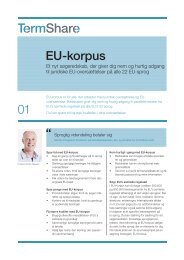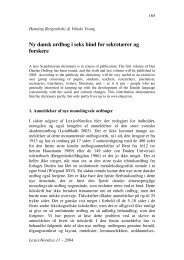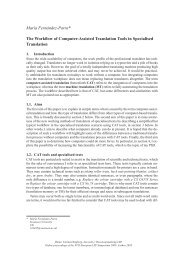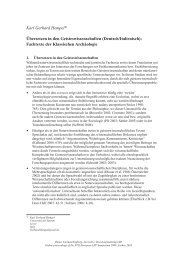Accounting for Interdiscursivity: Challenges to Professional Expertise
Accounting for Interdiscursivity: Challenges to Professional Expertise
Accounting for Interdiscursivity: Challenges to Professional Expertise
Create successful ePaper yourself
Turn your PDF publications into a flip-book with our unique Google optimized e-Paper software.
14<br />
Chris<strong>to</strong>pher N. Candlin<br />
• What is their source?<br />
• How are they drawn upon or co-constructed in critical moments<br />
in given sites?<br />
• What is their relationship <strong>to</strong> work and action in particular sites?<br />
• How pervasive are they across discourse types and activity types?<br />
• How are they realized textually and semiotically?<br />
• How are they recognised as significant and by whom?<br />
• What role does their deployment play in underpinning<br />
professional expertise?<br />
4. Focus on research<br />
We have claimed at the outset of this chapter that coping with the<br />
challenges of interdiscursivity is a characteristic of professional<br />
expertise. We further came <strong>to</strong> the conclusion that in order <strong>to</strong> explore<br />
and attempt <strong>to</strong> explain such interdiscursivity and such expertise it was<br />
inadequate only, or even primarily, <strong>to</strong> focus our attention on the<br />
descriptive features of text. In making this claim, and directing our<br />
attention <strong>to</strong>wards activity type, discourse type and, in particular,<br />
strategy, we do not, of course, avoid the need <strong>to</strong> carefully describe<br />
realizations multi-modally, and in any case semiotically, and not<br />
merely linguistically. One might then begin this focus on research<br />
with the assertion that given this stance, interdiscursively managed<br />
communication requires an interdiscursive methodology, one that<br />
employs a range of methodologies in a multiply-focused study of the<br />
available data – such a data set being unders<strong>to</strong>od as not merely what<br />
was, or significantly was not, articulated or displayed, but also what<br />
drew in as relevant data participant narrative, institutional and<br />
organizational analysis, both in the context of the his<strong>to</strong>rical as well as<br />
the immediate, and involving micro and macro perspectives.<br />
Candlin (1997: xii) makes the following claim in this context:<br />
[…] what emerges is a requirement <strong>for</strong> […] a complex interdiscursivity of<br />
analysis, matching the interplay between the micro and the macro, the actual<br />
and the his<strong>to</strong>rical, the ethnographic and the ethnomethodological, the











